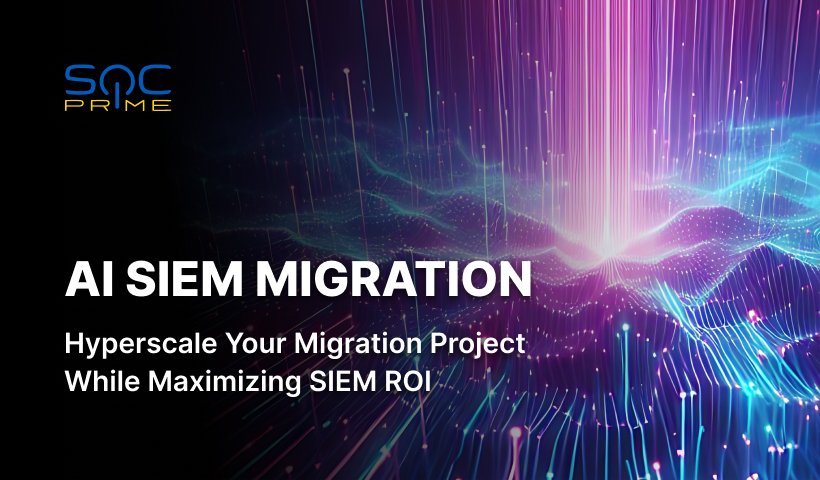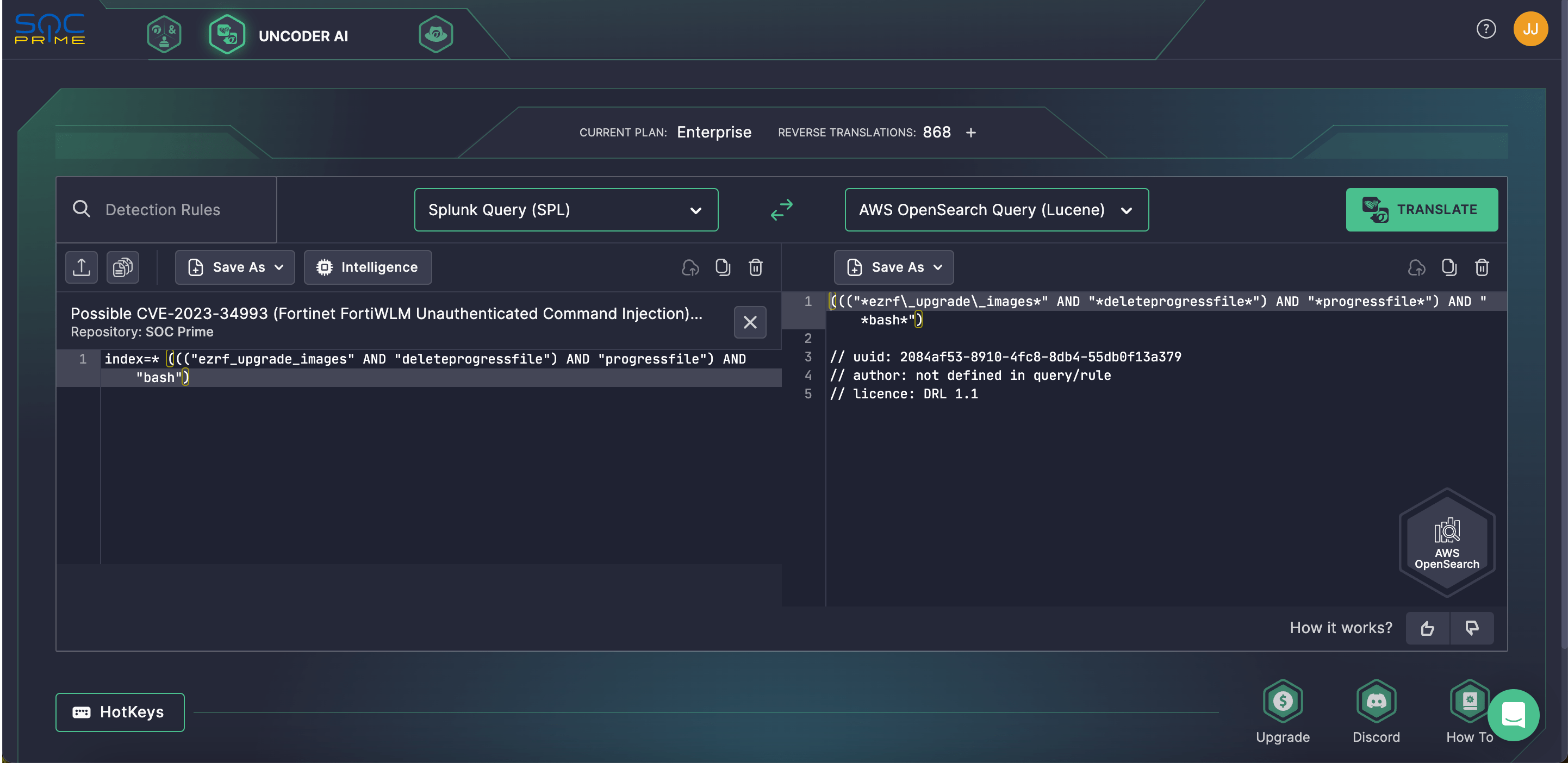AI SIEM Migration: Simplify, Optimize, Innovate

Breaking Down Complexities for Smooth Adoption of Your Next-Scale SIEM
According to Gartner, “cloud is the enabler of digital business”, which drives mission-critical organizations to consider cloud adoption and migration. SIEM migration to the cloud facilitates addressing common IT constraints, like slow time to value, limited resources, and incompatible systems. However, it is not a one-size-fits-all solution that requires careful planning, feasible cloud cost optimization plans, and alignment with business priorities and compliance requirements.
Recent research by Elastic states that around 44% of security professionals surveyed are considering a SIEM migration project, including 51% CEOs and 52% CTOs. Yet SIEM migration is a long-lasting and resource-intensive task. It could take from 3 to 12 months, depending on the size of the organization, the complexity of the environment, the specific SIEM solution being used, and the scope of the migration.
Complex legacy systems may require extensive manual labor to integrate log sources and migrate custom use cases, straining in-house teams and increasing risks. The log source integration and detection content translation part of SIEM migration is also burdensome, fueling the need for substantial refinement and fine-tuning to avoid pitfalls and mismatches.
To sum up, traditional SIEM migration processes are often characterized by several inherent challenges:
- Complexity: Migrating SIEM systems involves transferring complex configurations, rules, and queries, which can be error-prone and time-consuming when done manually.
- Resource Intensiveness: The migration process requires skilled personnel and significant resources to ensure data integrity, policy alignment, and system compatibility.
- Time Constraints: Organizations cannot afford prolonged downtime during migration, requiring efficient and streamlined processes to minimize disruption.
- Data Mapping and Normalization: Aligning data formats and schemas between different SIEM platforms requires careful mapping and normalization to ensure data integrity and accuracy.
- Rule Translation: Translating rules and queries from legacy systems to new SIEM platforms while maintaining efficacy and performance can be challenging.
In response to these challenges, there is a growing demand for solutions that can accelerate SIEM migration at scale, leveraging advanced technologies to automate and streamline key aspects of the migration process. These solutions offer intelligent capabilities to assess existing SIEM configurations, automatically translate rules and queries, and facilitate the seamless transition of security policies and workflows.
In 2018, SOC Prime pioneered its Uncoder IO, a free and private online translation engine powering one-click conversions from Sigma rules to SIEM saved searches, filters, queries, API requests, and correlations, which became the industry-first tool to bridge the gap between multiple cybersecurity languages. In 2023, SOC Prime rolled out a major update for the tool driving Uncoder evolution into a SaaS AI co-pilot for Detection Engineering that enables automated cross-platform rule and query translation for SIEM, EDR, and Data Lake native languages or open-source language formats like Roota and Sigma. Uncoder now fuses collective industry expertise along with artificial and augmented intelligence to write detection rules, quickly and reliably translate them to a preferred query language, pack IOC collections alongside behavior-based detections, and get required metadata, including MITRE ATT&CK® dictionaries, threat intelligence, CVE and exploit context, as well as log source data auditing requirements – all from a single tool.
By leveraging Uncoder AI backed by SOC Prime technology and the Professional Services Team, organizations can seamlessly migrate to any SIEM of their choice as Uncoder supports cross-platform query translations across 14 SIEM, EDR, and Data Lake technologies. This list expands to 40 platforms in case security professionals opt to use Sigma or Roota as a core standard for their detection content translations.
We continuously enhance our technology to simplify the SIEM migration flow for SOC Prime users. Security professionals might start with The Prime Hunt acting as an open-source browser add-on serving one UI to simplify and speed up threat investigation regardless of the SIEM or EDR in use. Start working on detection rules & queries right from your browser, and in case any detection code refinement or translation to another security language is required, users can automatically move the work to Uncoder AI in a matter of clicks. Updated rules & queries might be deployed to a chosen SIEM or stored in your own custom repository in SOC Prime Platform or saved on GitHub.
Among other content translation tools on the market, Microsoft offers SIEM Migration Experience, a beta feature within Microsoft Sentinel aimed at streamlining the migration process from Splunk. While the tool primarily focuses on facilitating the migration of detection rules from SPL to the KQL language format, it is somewhat lacking in considering the holistic migration strategy to ensure a smooth transition without translation errors between a source and target code and is currently limited to a single platform. Microsoft recommends leveraging SOC Prime’s Uncoder IO for use cases where detection algorithms aren’t covered by Microsoft Sentinel’s built-in rules during translation: “If you have detections that aren’t covered by Microsoft Sentinel’s built-in rules, try an online query converter, such as Uncoder.io…”
SOC Prime also provides guided Splunk support and migration to help organizations optimize resource effectiveness and accelerate time to value. Organizations leveraging Splunk might be challenged by its complexity as a solution that requires extensive training. Moreover, as your use case library expands and costs associated with ingest-based licensing in Splunk continue to rise, you might be considering the migration to a different SIEM. Leveraging Uncoder AI and the expert support of SOC Prime’s Professional Services Team, you can effortlessly transition large volumes of data to your preferred next-gen SIEM platform to ensure a seamless migration experience without translation hurdles.
Rely on SOC Prime to move beyond the constraints of legacy solutions and smoothly transition to a next-gen SIEM with a SIEM migration package perfectly fitting your budget and security needs.

